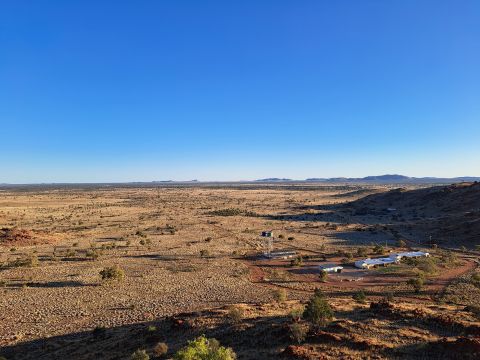
The project is funded by the Australian Government ($5,099,067) and the South Australian Government ($5,099,067). Australian Government funding is provided through the National Water Grid Fund.

A typical setting for water supply to a small community in the APY Lands. The image shows a groundwater wells supply tank and water treatment plant adjacent to the community. Image credit: SA Water.
Project overview
This project will improve water security in 8 Aboriginal communities in the South Australian APY Lands:
- Amata
- Kalka
- Kaltjiti (Fregon)
- Mimili
- Pipalyatjara
- Pukatja (Ernabella)
- Umuwa
- Yunyarinyi (Kenmore).
These communities could lose access to water if ageing infrastructure is not improved. The project will maximise the use of existing bores through upgrades. It will also support new water needs in a changing climate.
The project includes:
- equipping bores and providing water and power connections in 4 communities
- building monitoring wells in 4 communities.
The project will also bring social, cultural and environmental benefits, such as:
- ensuring communities can access water without severe restrictions
- helping Anangu people to stay living on Country
- supporting native revegetation to improve liveability.
The project supports progress towards long-term water security in the APY Lands. It also complements a National Water Grid Fund science project looking into groundwater in the area.
This project is part of the Australian Government’s commitment to Close the Gap on water security in First Nations communities.
Key project benefits
Read more
- Media release: $60.8 million towards securing water needs in remote First Nations communities
- Find out more about First Nations water infrastructure projects
- Read about the APY Lands Groundwater Quantity and Quality Investigation science project

